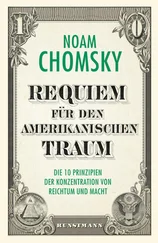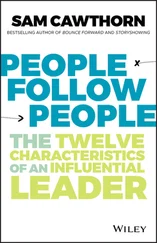2 “As of 2003, only two people had been convicted in the dozens of murders and thousands of displacements that took place in El Chocó.” (Idem)
3 “Why Myths About Immigrants and Immigration Are Still with Us Today.” Beacon Broadside, April 24, 2018.
UNITED STATES
1
Industrialization, Deindustrialization, and Immigration in a New England City
One of the beautiful things about studying history is that it allows us to see our everyday realities with new eyes. Instead of taking their existence for granted, we can see the people, the culture, the institutions, and even the roads, buildings, and neighborhoods around us as products of history.
In New England, local history is frequently taught and commemorated. But global history is less well acknowledged, even though New England’s cities and towns have been deeply connected to global trends for hundreds of years.
Salem, Massachusetts, a small coastal city north of Boston, was a Native American village before the English arrived in 1620. Thus one of its histories is part of a global history of European expansion and colonialism. While Salem’s colonial history—in particular, the witch trials—has been the subject of creative and historical works—its commonality with ongoing issues of race, citizenship, national identity, and neocolonialism is rarely explored.
In the eighteenth century, Salem rose to national and global prominence as the most active port in the newly-established United States. Slaves, sugar and rum produced by slaves, and salt cod to feed West Indian slaves were some of the major products flowing between Salem and the Caribbean, while Salem ships also dominated the East Asia trade. Much of Salem’s wealth was created in this period. The historic houses of Chestnut Street and the McIntyre District and the Peabody Essex Museum offer silent testimony to Salem’s maritime age. 1
As Salem’s port lost ground to the growing harbors of Boston and New York in the early nineteenth century, members of its merchant class joined forces to invest in what appeared to be New England’s next frontier: a textile mill. Salem ship out cotton and wool textiles from Lawrence and Lowell, and brought in cotton, hides, glues, and jute from everywhere from the U.S. south to South America and South Asia. In 1838 they incorporated the Naumkeag Steam Cotton Company, the first New England mill to run on steam power—with coal brought in from Appalachia. The mill produced cotton sheeting—Pequot sheets—sold throughout the United States and as far away as Zanzibar, where the manufactured American cloth came to be known as merekani [American]. 2
The new industry attracted a portion of the migrant stream then coming into the U.S. Workers from Ireland were soon joined by French Canadians and Polish immigrants from the Austro-Hungarian Empire. As was the case with many of the Europeans streaming into the United States between the mid-nineteenth and the early twentieth centuries, these were national minorities from the peripheries of capitalist and industrial development. Their national identities were sometimes oppositional and even revolutionary. 3
New immigrants brought with them radical ideas, and fought hard for their rights as workers. Within a generation or two, these immigrants assimilated. They gained some rights, and many began to identify with, rather than challenge, the capitalist system that they worked for and their adopted country.
Two ethnic neighborhoods housed many of the new immigrant workers. By the end of the nineteenth century French Canadians had flocked to the old Stage Point, newly christened “Le Point” where company tenements and private boarding houses lined the streets with triple-decker houses. The later arrivals, the Austrian Poles, filled the Derby Street area near the wharf. These neighborhoods still exist today. The Polish history of Derby Street is still alive, with street names, social halls, veterans’ associations, and many families still living there. The French Canadian history of the Point has mostly vanished, as French speakers moved out and Spanish speakers moved in during the second half of the twentieth century. Today the small shops are Caribbean bodegas and restaurants.
The first generations of Irish immigrants formed a union at the mill and there were several strikes in the first decades of the twentieth century. By the 1920s, though, New England’s textile sector was in decline, as the country’s first wave of plant closures struck the industry. This neighborhood ethnic and industrial history is quite visible to the discerning eye. In Salem, like in any industrial or post-industrial city, students can explore it through old photographs, newspapers, and strolls through neighborhoods.
Textile magnates had explored the idea of multiple siting for decades, and the U.S. south held a number of attractions for them. Taxes and wages were lower there. Instead of radical immigrant workers they could employ “native American stock.” Unions were almost unknown. The legacy of slavery was omnipresent in racial divisions, in white conservatism and reluctance to challenge the social order, and in suspicion of government regulation. Spartanburg, South Carolina advertised itself directly to mill investors as “The Lowell of The South.” By the 1920s, mill after mill was making the decision to move.
Mr. Seamans’ report (see Primary Source 1 in Appendix) documents the Salem mill’s exploration of a southern location in the 1920s. The report reveals the rush by northern factories to relocate, and shows the specific factors like labor and taxes that were cheaper in the south. Although the report doesn’t address how this situation affects people living in the south, students can consider how low wages and low local and business taxes might affect residents. They can compare the mid-twentieth-century shift of the textile industry to the south with the current deindustrialization that is taking manufacturing jobs to places like China and Bangladesh, and ask who benefits from this process. They can consider why the mill preferred “native American stock” to immigrant labor.
For the mills that remained in New England, the threat posed by the south served as a potent tool for labor control. Mill owners complained that the southern competition was ruining them. (Even though frequently, their southern “competitors” were branches of their own companies.) They appealed to their workers, and to local governments, to accommodate their needs and replicate southern conditions—in particular, low wages, low taxes, and minimal regulation—in order to help them compete and stay profitable in the north. And they threatened that if they didn’t get their way, they would leave.
Today, analysts call this process the “race to the bottom” and it affects virtually every industry. Popular opinion tends to blame other countries, like China and Mexico, for “stealing” industries and jobs from the United States with their low-wage, low-tax, low-regulation environments. Some also blame Free Trade Agreements that the United States has signed with countries like Mexico. But the roots of the surge in off-shoring, runaway plants, and deindustrialization in the late twentieth century can be found in the textile industry a hundred years earlier. And like a hundred years ago, employers frequently use the threat of plant closure to control their workers, especially when confronted with union organizing drives. 4
In Salem, the mostly male- and mostly Irish-controlled union entered into an experiment in labor-management collaboration in the 1920s. The main issue at stake was speed. The company wanted to speed up the labor process and increase production and efficiency by having workers tend more machines. This way fewer workers could produce the same amount of cloth. In early 1933 the workers rebelled and walked off the job. For 11 hungry weeks over a thousand workers held firm to their demand that “we want no more research!”
Читать дальше












